Ruins of Corfe Castle
The ruins of the castle of Korf.
In short, story The castles are very interesting, and they themselves are surrounded by some strange attractive atmosphere. You look at them and think: what is good is ruins, piles of stones, but for some reason I want to go there. Here in England there are a lot of well-maintained and well-preserved castles, but ... people go and where, in general, there are only ruins and ... look at what? On them!
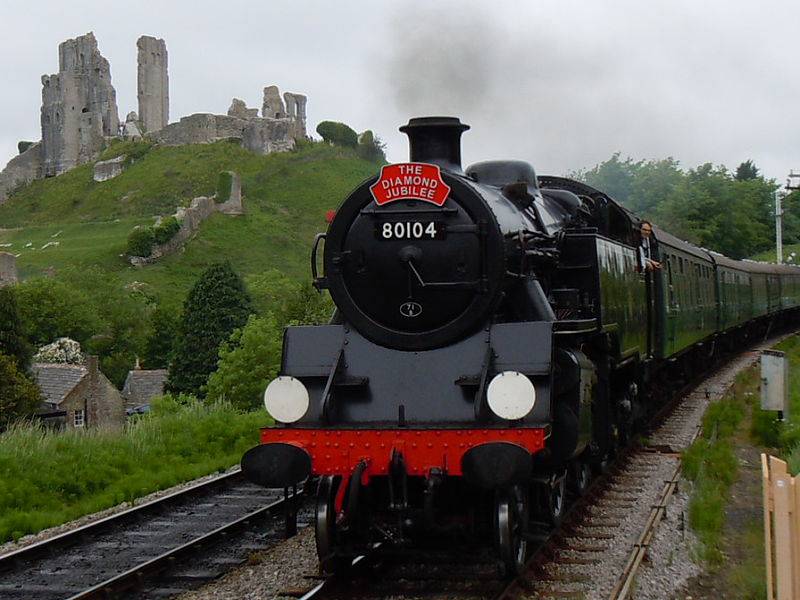
It's like in Harry Potter, isn't it? But such is England ...
Here and on top of one of the hills with the name Purbek, located in the English county of Dorset, you can see just such ruins. These are the ruins of the castle of Korf, whose history is shrouded in secrets and legends, and the walls are witnesses of countless conspiracies, betrayals and numerous murders.
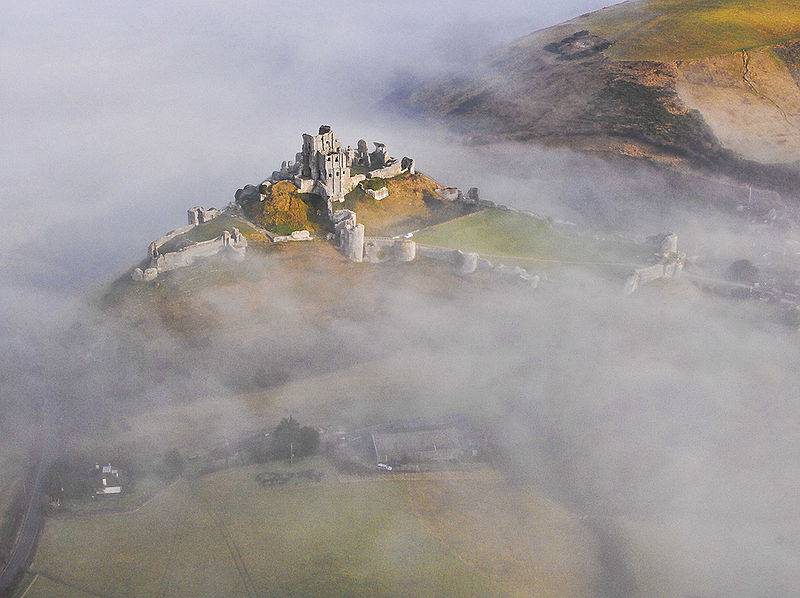
Corfe Castle: a bird's eye view.
For some reason, everyone is talking about some kind of mystical atmosphere that envelops this castle, and that it feels particularly good at dawn or dusk when you are standing on one of the neighboring hills. Probably many here stood on these hills and thought about ... what? How it would be better to capture it, how many people and weapons and ... about their own greatness in the event that such a thing succeeds.
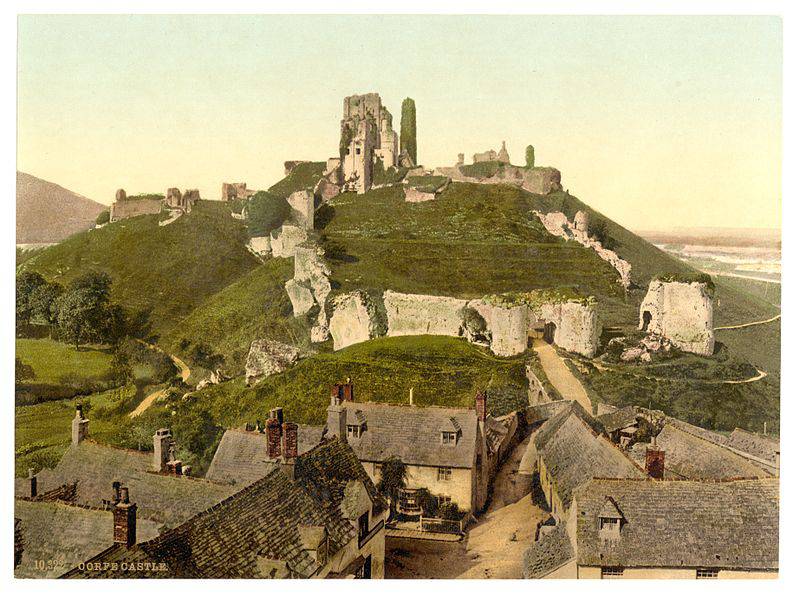
Photo of the late XIX century.
Korf Castle is ruins. But it is located almost in the middle of the village of the same name, and just in the western part of it, archaeologists found burials of the Bronze Age. That is, people came here and settled on these hills for a very long time, and ... what, interestingly, attracted them here?
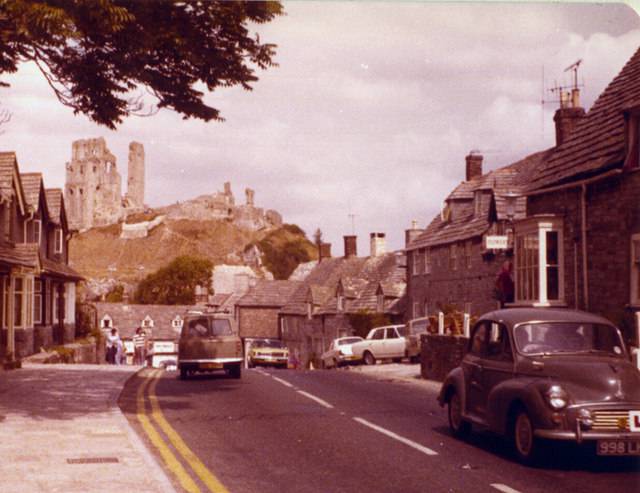
View of the castle from East Street. Photo 1976 of the year.
It is known that the VI century BC. The Celtic Durotrigi people migrated to this land from the headwater of the Danube. And they were not only militant people, but also experienced farmers, and in addition were so civilized that they minted their own coins before the Roman conquest. Durotrigi built large settlements in Dorset and neighboring Somerset and Wiltshire. According to the tradition of that time, such settlements were surrounded by a wooden palisade or surrounded by an earthen embankment. In the village of Korf, the castle is visible from everywhere!
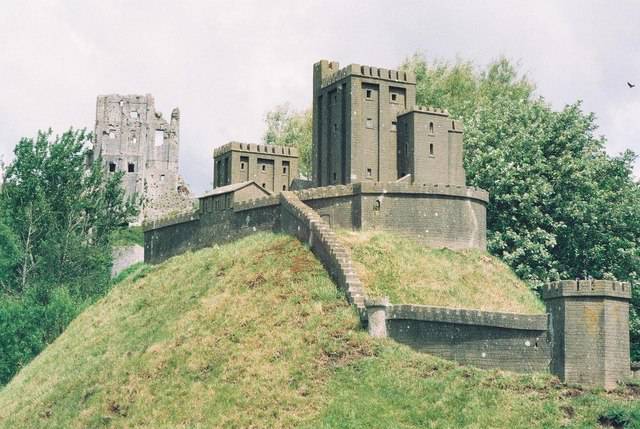
Such was the castle of Korf before Cromwell's sappers "worked" on it. A layout that can be seen in the village of Korf.
Since the Celts didn’t have written language as such, we know about the life of Durotrigs from the Greeks and Romans, so there is little information about them, because for those and for others it was just barbarians living on the border of civilization.
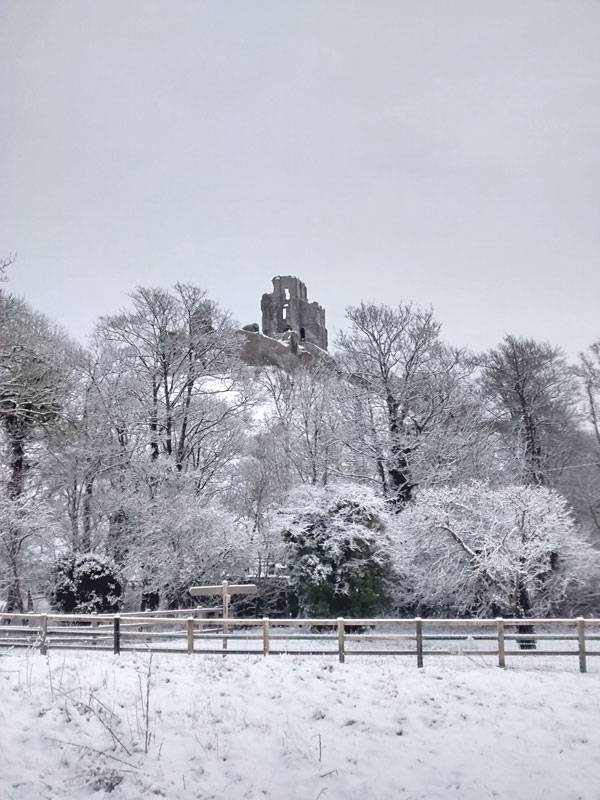
Castle in winter.
Thus, in The Life of the Twelve Caesars, Suetonius mentions the battle between this people and the 2nd August Legion, commanded by Vespasian. It happened in 43, but already in 70, the Durotrigues became part of Roman Britain and did not rebel again.
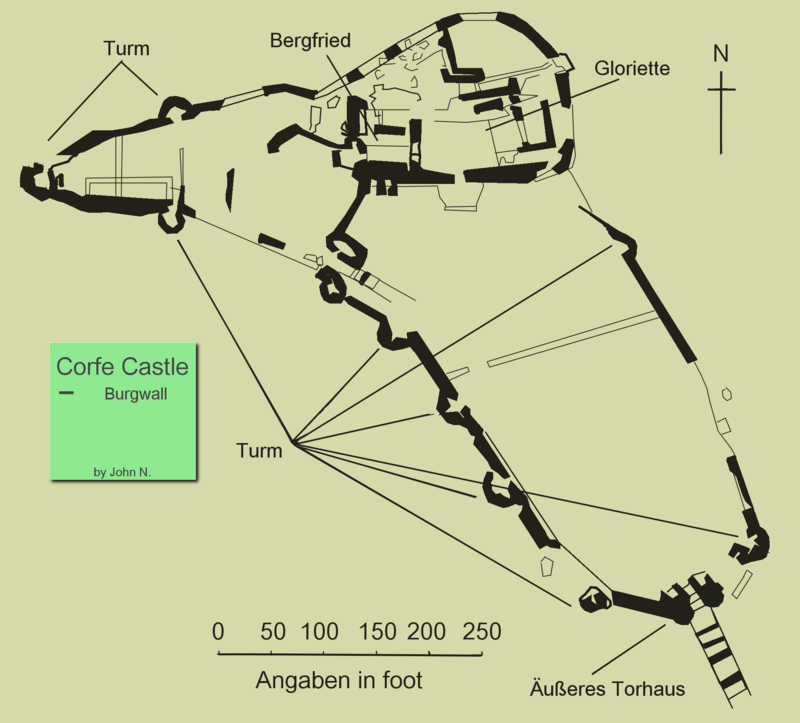
Modern castle plan.
There is a legend, later recorded by the historian Thomas Gardi, that on the Purbeck hills, where the Durotrigi lived, the Roman legion simply took and ... disappeared. And now in the morning fog, you can sometimes see the ghost warriors of this legion marching towards the settlement of the local Celts. Whatever it was, but the battle between the Romans and the Durotrigs at Maiden Castle really was, and in it the natives were defeated by the Romans.
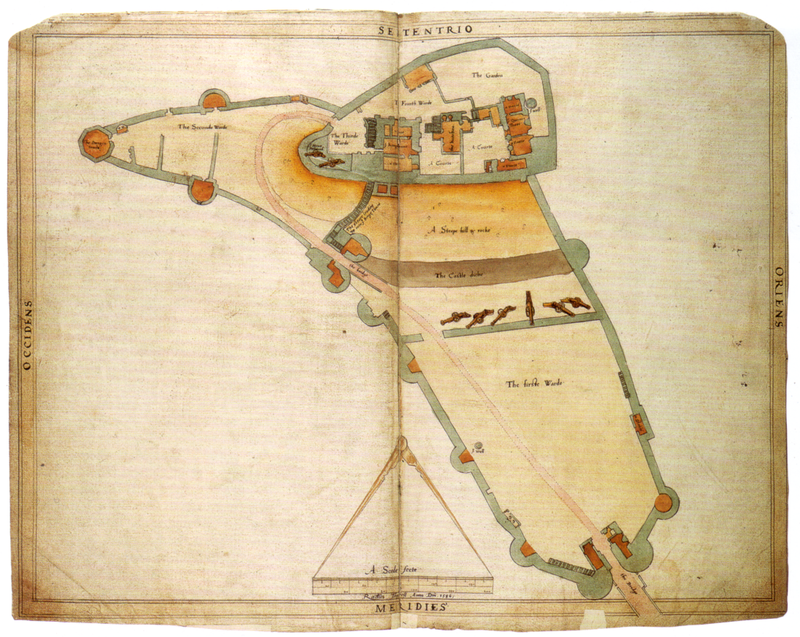
Plan castle 1586 year.
However, later, when the Romans left Britain, these lands began raids by various Scandinavian and also Germanic tribes. Both the Saxons and the Danes were able to gain a foothold in the Purbek hills, and immediately began to fight against each other - after all, it was almost the most beloved human activity to kill people speaking a foreign language at that time. Interestingly, when the 875, the king of the Saxons Alfred, concluded a peace agreement with the leader of the Danes, Hubba, they only managed to live in peace for two years, and then it was broken, and the war began again.
That year a large-scale naval battle took place, in which Alfred and his army managed to sink the 120 ships near Cape Peveril. Wanting to protect their lands from raids from the sea, King Alfred the Great ordered to build a castle on the highest hill in this place. And it was the very first Saxon fort on the site of the future castle of Korf.
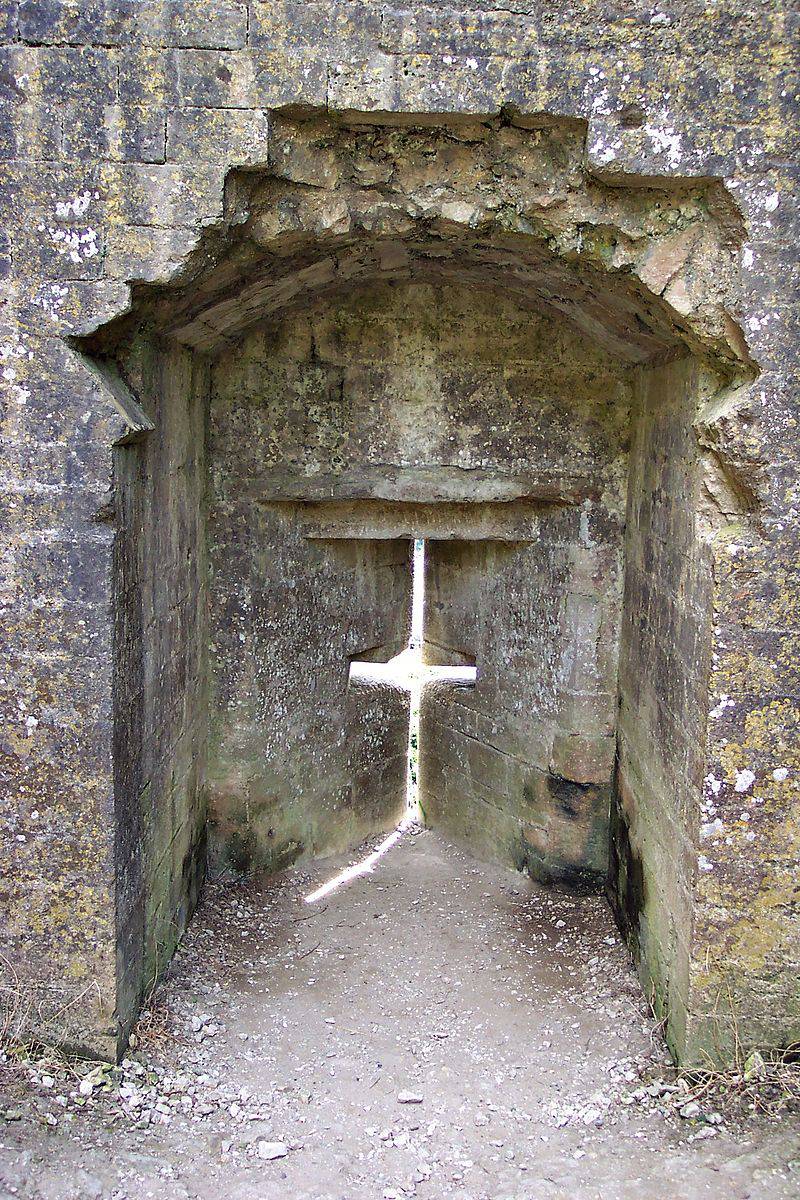
An embrasure for archers.
Here 18 March 978 of the year to visit his stepmother the Saxon Queen Elfried and arrived teenage King Edward with his stepbrother Ethelred. And then the legend says that she killed her stepson in order to put Ethelred on the throne.
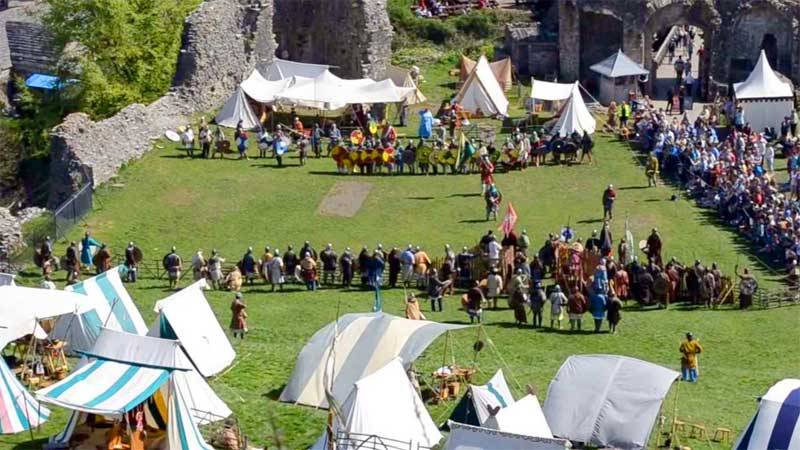
Today costumes are played on the castle grounds: in this case, the Vikings are fighting with the Saxons.
During the year, however, the remains of Edward were exhumed and, as they said, miraculously survived - a sure sign of holiness among Christians. Then he was reburied at Shaftesbury Abbey, and a cult of honoring his memory soon formed around him. His remains were regarded as sacred relics and were hidden during the persecution of the monasteries that took place during the reign of Henry VIII. The very bones of the saint, as they say, were already discovered in our time in the ruins of the abbey in 1931, and today they are transferred ... to the Orthodox Church of Saint Edward the Martyr in Brookwood, in Surrey. You will be there, worship them, and perhaps you will be rewarded by this saint, but in that distant past, the death of Edward only weakened the kingdom. The people of the new king knew as Ethelred the Unprepared and did not really respect him. Dana took advantage of this and increased the pressure on the coast. There is a wonderful movie made by cinematographers of the USSR and Norway, "And trees grow on stones ...". So there is about these Danes and their pirate habits, although other coastal peoples, too, did not differ in their piety. However, be that as it may, but in the western wall in the inner part of the castle there are still extant fragments of masonry from the Elfriede Palace.
The main entrance to the castle.
From that time on, the ominous glory of Korf Castle began, which survived so many bloody events as perhaps no other castle in England had befallen.
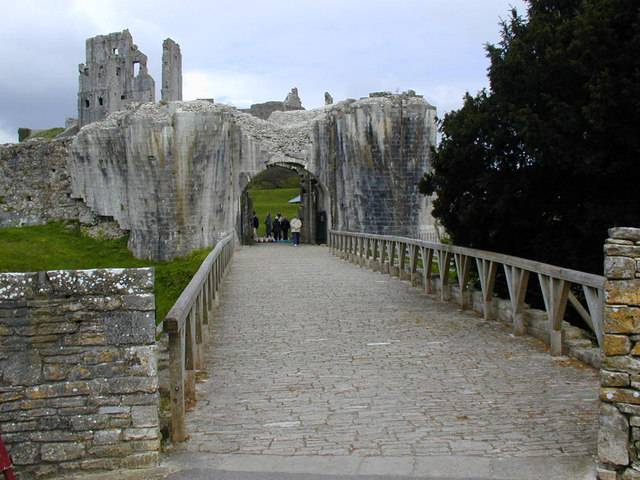
Bridge and gate between the towers.
Since 1066, the Norman period began in the history of this castle. It all started with the fact that in addition to the old walls and chambers in the castle for King Henry I, the son of William the Conqueror, in the beginning of the XII century, they built the main tower. Its ruins and now look very impressive, because they rise in height to 21 m, and even located on a hill with a height of 55 meters.
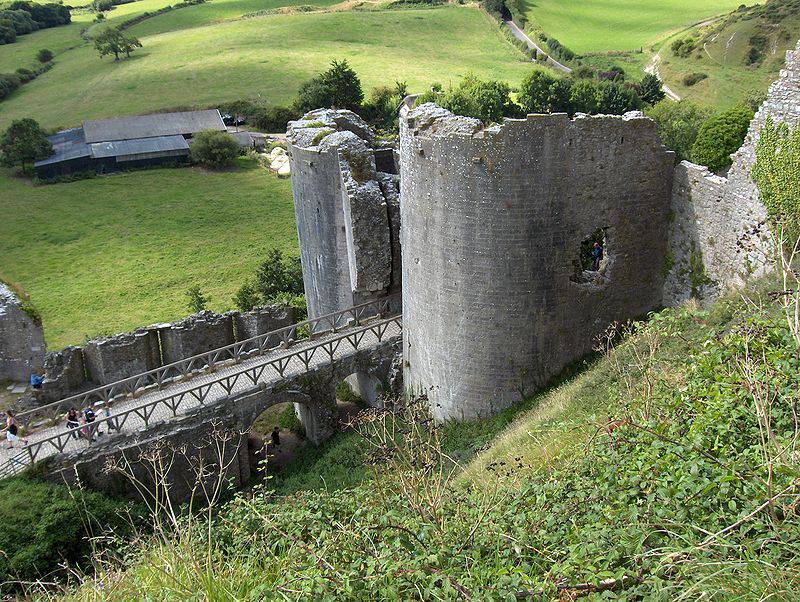
Ruins of the southwest gate.
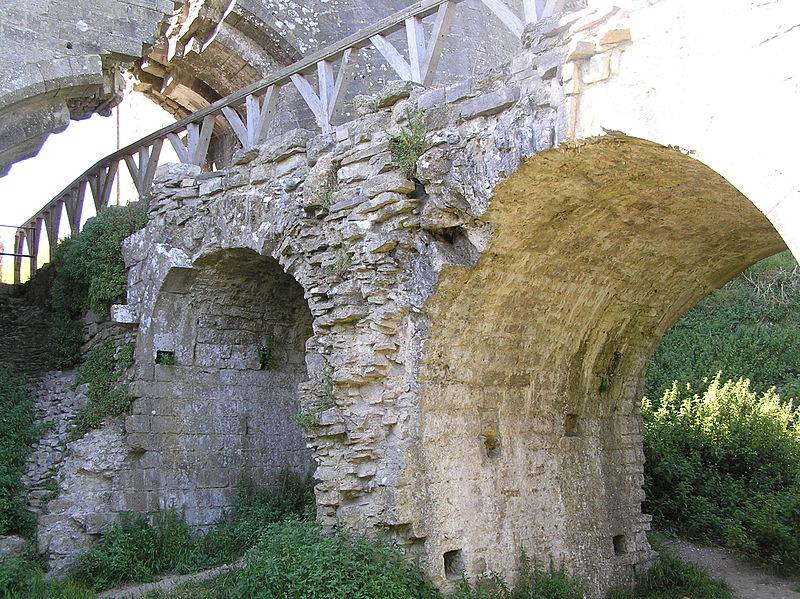
Bridge supports to the southwest gate.
Since Henry I did not leave behind a legitimate male heir, his daughter Matilda presented a claim to the throne, which was supported by her husband Zhofrey Plantagenet and the Anjou royal house. But she reigned for only one year, and then her nephew Stephen, the representative of the royal house of Blois, overthrew her from the throne. So in England the civil war began. The army of Stefan laid siege to the castle of Korf, but, despite the cruel siege that Matilda shared with the warriors, he withstood the efforts of her faithful companion and the experienced commander Baldwin de Redver. However, Matilda still lost the war, and was forced to leave the castle of Korf and go to Normandy, where her husband ruled.
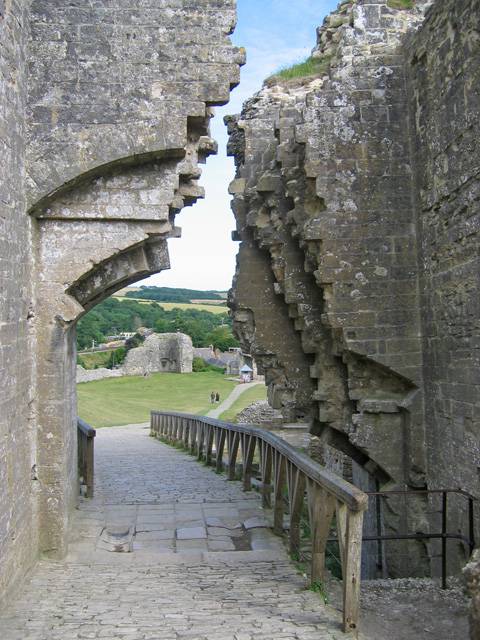
These same southwestern gate. View from the castle.
Then the castle of Korf became one of the five main royal castles of England. King John (John Landless) was here kept his royal treasures. And then King Edward II was also detained here. People here were tortured, killed, and for some reason it was his king Henry VII who presented it to his mother. Henry VIII again turned him into the property of the crown. But his daughter Elizabeth the Virgin, in turn, gave Korf as a gift to her chancellor, Christopher Hutton.
The impressive ruins of the North Tower.
He began by saying that ... further strengthened all the fortifications of the castle, explaining this by the fact that ahead of England there is a war with Spain. And the war really took place, only the Great Armada passed by these lands. Korf, however, remained privately owned. Then the Hatton family sold it to his family Banks, and it was not just a rich family - Sir John Banks at the court of Charles I was not someone, but the Chief Justice.
Tourists visiting the gun since Oliver Cromwell.
During the Second Civil War in England (1642-1651), the Banks family took the side of King Charles I and supported him against Cromwell. And it turned out that the head of the family died at that time, and his widow, brave Lady Mary Banks, along with 80 soldiers, managed to withstand two long sieges to which the castle was subjected to parliamentary troops. However, in the end, the castle still fell because of the betrayal of one of the soldiers.
And there is a legend that a royalist officer called by her name ... Cromwell, and offered to help her escape, but the resolute lady still remained in her house. As a result, Korf fell, Cromwell ordered not to spare gunpowder and blow it up. But ... the story is funny: the losing lady Banks survived before the body of Cromwell was pulled out of the grave and pulled to the gallows, Charles II returned to England under the cheering crowds of the crowd. Well, for her loyalty to the throne they returned all her lands confiscated by the decision of the parliament!
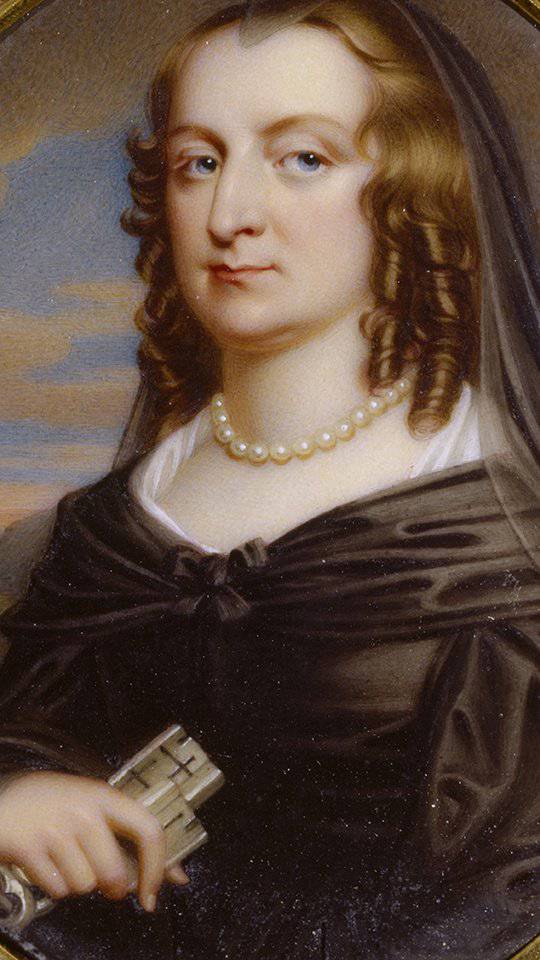
Portrait of a lady banks.
And Korf Castle - or rather what was left of it, and the land around it belonged to the Banks family right up to 1982, when the next owner, Ralph Banks, transferred the estate to the so-called National Trust, an organization that preserves the cultural heritage of Britain, so today it is an important national tourist site!
For tourists here everything you want, including a typical English cottage of the XVII century.
If someone is interested to know the history of this rather unusual, let's say, the castle and its inhabitants, then he can read a book published in English by The George Bankes, which can be buy in online stores.
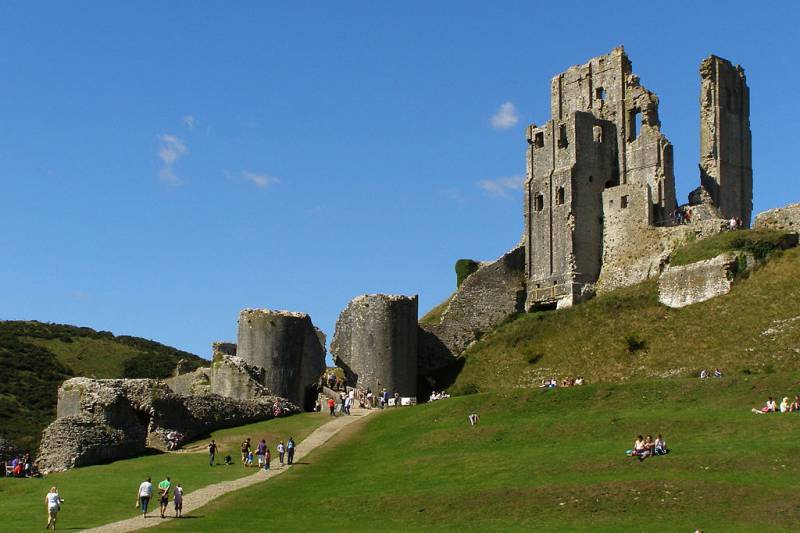
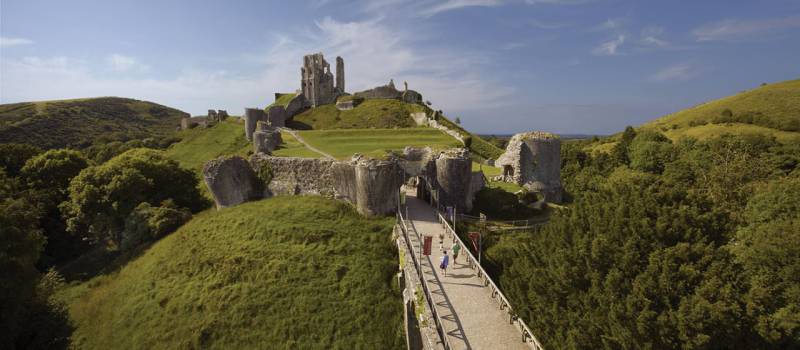
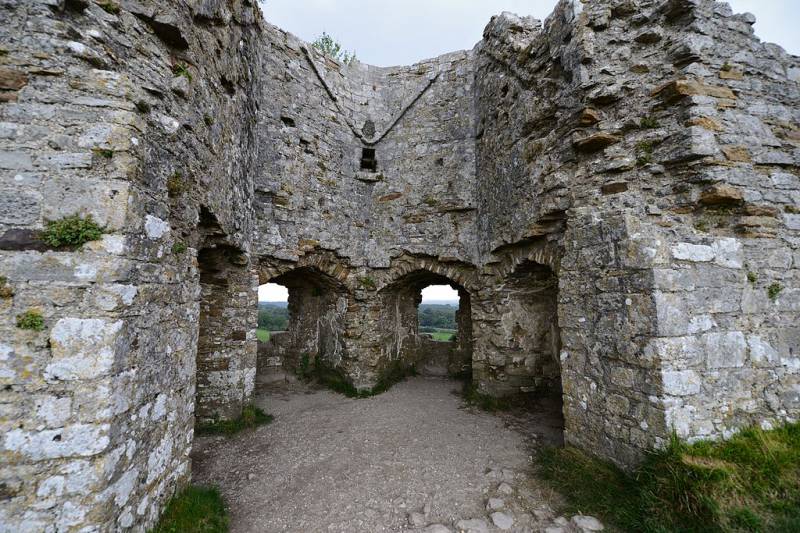
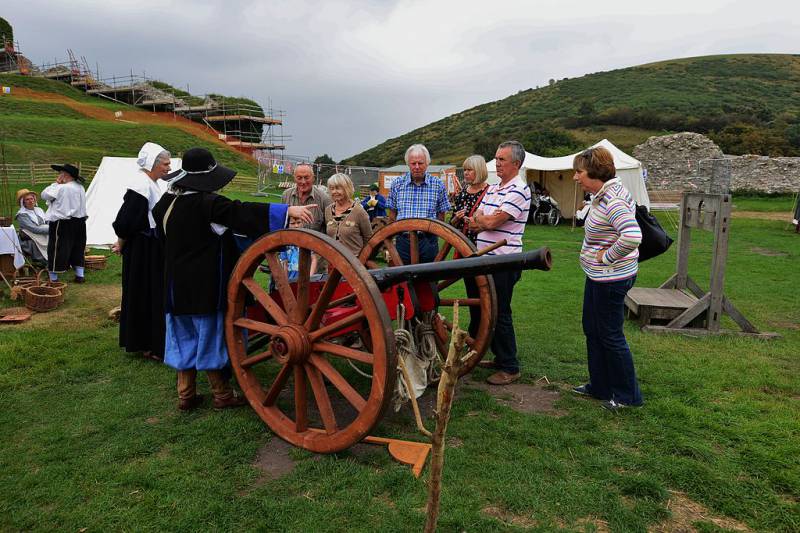
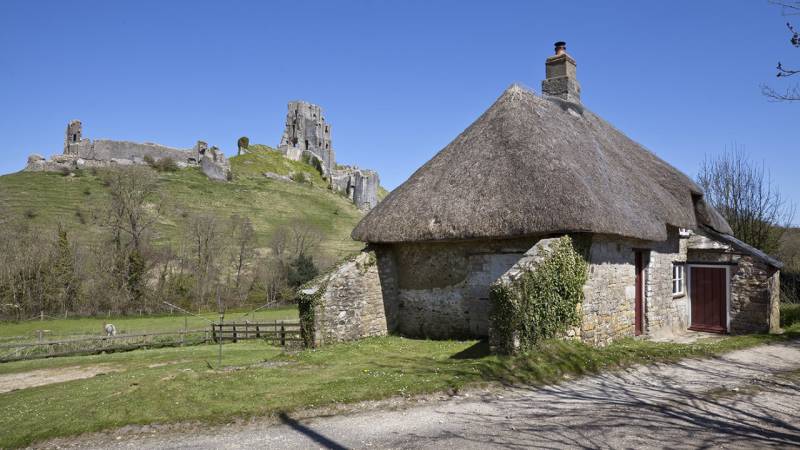
Information